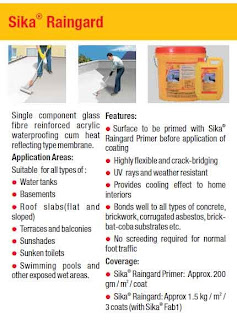Its the season for modhaks and laddoos. Its that time of the year when Idols of Lord Ganesha, the ever lovable remover of obstacles, are brought home and decorated with great enthusiasm. Also it is the time to reaffirm our responsibility towards an eco friendly celebration.
. Environment friendly paints = paints not containing heavy metals like lead, arsenic, chromium, mercury + paints having low % of volatile organic compounds (VOCs).
. Preferably use water based paints as these are low in VOC and also dry faster than solvent/oil based paints.
Royale can also be used to decorate your walls to give your festivities that Royale touch.
Happy Painting!! Happy Ganesha Chaturthi!!
How to ?
. Buy only Idols made of clay.
. Make sure that the paints used on the idols are environment friendly.. Environment friendly paints = paints not containing heavy metals like lead, arsenic, chromium, mercury + paints having low % of volatile organic compounds (VOCs).
. Preferably use water based paints as these are low in VOC and also dry faster than solvent/oil based paints.
What products to use ?
An ideal paint for this purpose is Asian Paints Royale Luxury Emulsion.
. It is water based.
. Has low VOC.
. Has no lead, arsenic, chromium, mercury.
. Has the Asian Paints Green Assure guarantee.
. Colour Spectra - It is available in a variety of shades (more than 1000 shades) which range from whites, pastels, mid tones to dark and vibrant colours. These shades are available in 200ml, 1L, 4L, 10L and 20L packs.
. Glitter Shades - It also has metallic shades such as gold, copper, bronze, silver and almost 40 other such shades. These shades are available in 200ml and 1L packs.
. The 200ml packs are ideal for small idols.
Asian Paints Royale Luxury Emulsion is readily available in stock in all the above packs at our store (click to locate on map).
How to Use ?
. Apply a coat of water based primer diluted to the required consistency with a brush on to the clay idol. Allow to dry for 4-5 hrs.
. Now apply Royale Luxury Emulsion in the desired colours on to the idols.
. Allow to dry for 4-5 hours before handling.
Royale can also be used to decorate your walls to give your festivities that Royale touch.
Happy Painting!! Happy Ganesha Chaturthi!!
Asian Paints Royale Luxury Emulsion is a trade mark wholly owned by Asian Paints Ltd.












